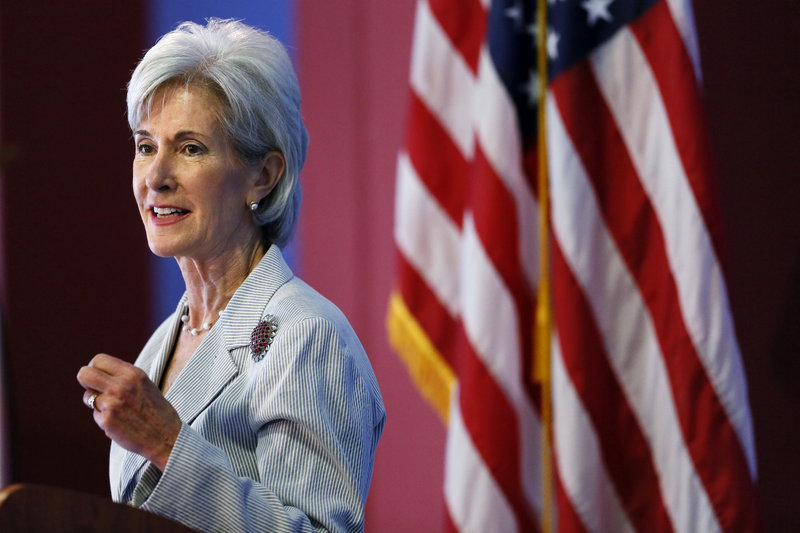WASHINGTON — With new health insurance markets launching next week, the Obama administration is unveiling premiums and plan choices for 36 states where the federal government is taking the lead to cover uninsured residents.
Before tax credits that work like an upfront discount for most consumers, sticker-price premiums for a mid-range benchmark plan will average $328 a month nationally for an individual, comparable to payments for a new car.
The overview of premiums and plan choices, released Wednesday by Health and Human Services Secretary Kathleen Sebelius, comes as the White House swings into full campaign mode to promote the benefits of the Affordable Care Act to a skeptical public. Congressional Republicans, meanwhile, refuse to abandon their quest to derail “Obamacare” and flirt with a government shutdown to force the issue.
Sebelius stressed the positive in a preview call with reporters. Consumers will be able to choose from an average of 53 plan options when the new markets open Oct. 1 for people who don’t have health care on the job.
“For millions of Americans, these new options will finally make health insurance work within their budgets,” she said.
In Maine, one of the 36 states where the federal government is setting up the exchanges, Anthem Blue Cross Blue Shield and Maine Community Health are the only two providers offering coverage under the Affordable Care Act exchange system.
A report by Health and Human Services estimated that about 95 percent of consumers will have two or more insurers to choose from. And the administration says premiums will generally be lower than what congressional budget experts estimated when the legislation was being debated. About one-fourth of the insurers participating are new to the individual coverage market, a sign that could be good for competition.
But averages can be misleading. When it comes to the new health care law, individuals can get dramatically different results based on their particular circumstances.
Where you live, the plan you pick, family size, age, tax credits based on your income, and even tobacco use will all impact the bottom line. All those variables could make the system hard to navigate.
For example, the average individual premium for a benchmark policy known as the “second-lowest cost silver plan” ranges from a low of $192 in Minnesota to a high of $516 in Wyoming. That’s the sticker price, before tax credits.
In the three states with the highest uninsured population, the benchmark plan will average $373 in California, $305 in Texas, and $328 in Florida. Differences between states can be due to the number of insurers competing and other factors.
“One surprise is Texas,” said Larry Levitt of the Kaiser Family Foundation. “That is a state that has put up roadblocks to implementation, but the premiums there are below average.”
The second-lowest-cost silver plan is important because tax credits are keyed to its cost in local areas.
But consumers don’t have to take silver. They can pick from four levels of coverage, from bronze to platinum. All the plans cover the same benefits and cap annual out-of-pocket expenses at $6,350 for an individual, $12,700 for families.
The big difference is cost sharing through annual deductibles and copayments. Bronze covers 60 percent of expected costs; silver, 70 percent, on up to platinum at 90 percent. Bronze plans have the lowest premiums and the highest cost sharing.
Send questions/comments to the editors.



